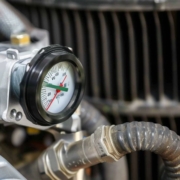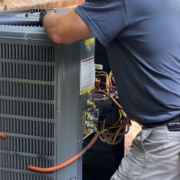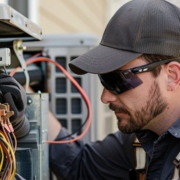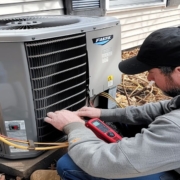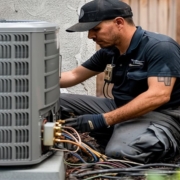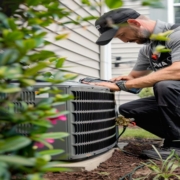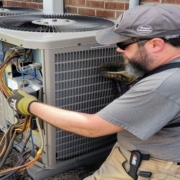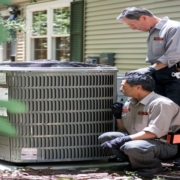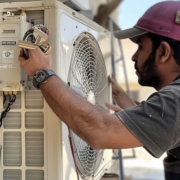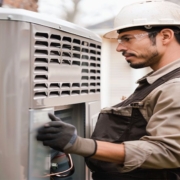Where is the AC Pressure Switch Located?
Have you ever wondered where your vehicle’s AC pressure switch is located? If you’ve experienced issues with your air conditioning system, understanding the location of the AC pressure switch can be crucial for troubleshooting and maintenance. In this article, we’ll delve into the details of the AC pressure switch, its significance, common malfunction symptoms, and most importantly, how to locate it in your vehicle.
Introduction to AC Pressure Switch
The AC pressure switch, also known as the AC pressure sensor, is essential to modern automotive air conditioning systems. It plays a vital role in regulating the pressure of the refrigerant within the AC system to ensure optimal performance and safety.
Importance of AC Pressure Switch in Automotive Systems
The AC pressure switch monitors the refrigerant pressure circulating within the air conditioning system. It shuts off the compressor if the pressure exceeds safe levels, helping prevent damage to the compressor and other components.
Understanding the Function of AC Pressure Switch
The primary function of the AC pressure switch is to monitor the refrigerant pressure and signal the compressor to engage or disengage accordingly. When the pressure reaches a predetermined threshold, the switch sends a signal to the compressor clutch to either activate or deactivate, maintaining the ideal pressure levels within the system.
Common Symptoms of a Faulty AC Pressure Switch
A malfunctioning AC pressure switch can lead to various issues with your vehicle’s air conditioning system. Some common symptoms include:
- Inconsistent cooling
- AC compressor cycling frequently
- Inoperative air conditioning system
Locating the AC Pressure Switch in a Vehicle
The exact location of the AC pressure switch can vary depending on the make and model of your vehicle. However, it is typically located near the AC compressor or within the refrigerant line.
Steps to Locate the AC Pressure Switch
- Identify the AC Compressor: The AC compressor is usually located at the front of the engine bay.
- Follow the Refrigerant Lines: Trace the refrigerant lines from the AC compressor to locate the AC pressure switch.
- Refer to the Vehicle Manual: If you’re unsure about the location, consult your vehicle’s manual for guidance.
Tools Required for Locating the AC Pressure Switch
- Flashlight
- Safety gloves
- Safety goggles
Safety Precautions Before Locating the AC Pressure Switch
Before locating the AC pressure switch, ensure the engine is turned off, and the vehicle is parked on a level surface. Additionally, wear safety gloves and goggles to protect yourself from potential hazards.
Procedure to Locate the AC Pressure Switch in Different Types of Vehicles
Passenger Cars
- Open the hood of the vehicle.
- Locate the AC compressor near the front of the engine bay.
- Follow the refrigerant lines from the compressor to find the AC pressure switch.
Trucks/SUVs
- Access the engine compartment.
- Locate the AC compressor, usually positioned near the front of the engine.
- Follow the refrigerant lines to locate the AC pressure switch.
Tips for Efficiently Locating the AC Pressure Switch
- Use a flashlight to illuminate hard-to-reach areas.
- Take your time and carefully inspect the area around the AC compressor.
- Refer to online forums or consult a professional mechanic for assistance if needed.
Maintenance Tips for AC Pressure Switch
- Regularly inspect the AC pressure switch for any signs of damage or corrosion.
- Keep the surrounding area clean to prevent debris from accumulating and affecting the switch’s performance.
When to Seek Professional Help
If you cannot locate the AC pressure switch or suspect it’s malfunctioning, it’s advisable to seek assistance from a qualified mechanic. Attempting DIY repairs without the necessary expertise can lead to further damage and safety risks.
Cost of Replacing an AC Pressure Switch
The cost of replacing an AC pressure switch can vary depending on the make and model of your vehicle, as well as labor costs. You can expect to pay between $100 to $300 for parts and labor.
DIY vs. Professional Replacement of AC Pressure Switch
While some vehicle owners may attempt to replace the AC pressure switch themselves, they should consider the task’s complexity and potential risks. Unless they have experience working with automotive HVAC systems, it’s generally safer and more efficient to entrust the job to a professional mechanic.
Conclusion
The AC pressure switch is a critical component of your vehicle’s air conditioning system, ensuring optimal performance and safety. By understanding its function and locating it, you can effectively troubleshoot issues and ensure proper AC system maintenance.
FAQs (Frequently Asked Questions)
- How do I know if my AC pressure switch is bad?
- Look for symptoms such as inconsistent cooling, frequent compressor cycling, or a malfunctioning AC system.
- Can I drive with a bad AC pressure switch?
- While it’s possible to drive with a faulty AC pressure switch, it’s not recommended as it can further damage the AC system.
- What causes an AC pressure switch to fail?
- Corrosion, electrical issues, or excessive pressure within the AC system are common causes of AC pressure switch failure.
- Is it safe to replace the AC pressure switch myself?
- Unless you have experience working with automotive HVAC systems, having the AC pressure switch replaced by a professional mechanic is safer.
- How much does it cost to replace an AC pressure switch?
- The cost of replacing an AC pressure switch can vary, but on average, you can expect to pay between $100 and $300 for parts and labor.

